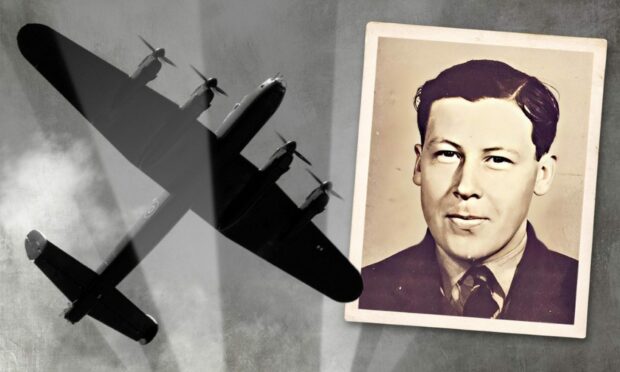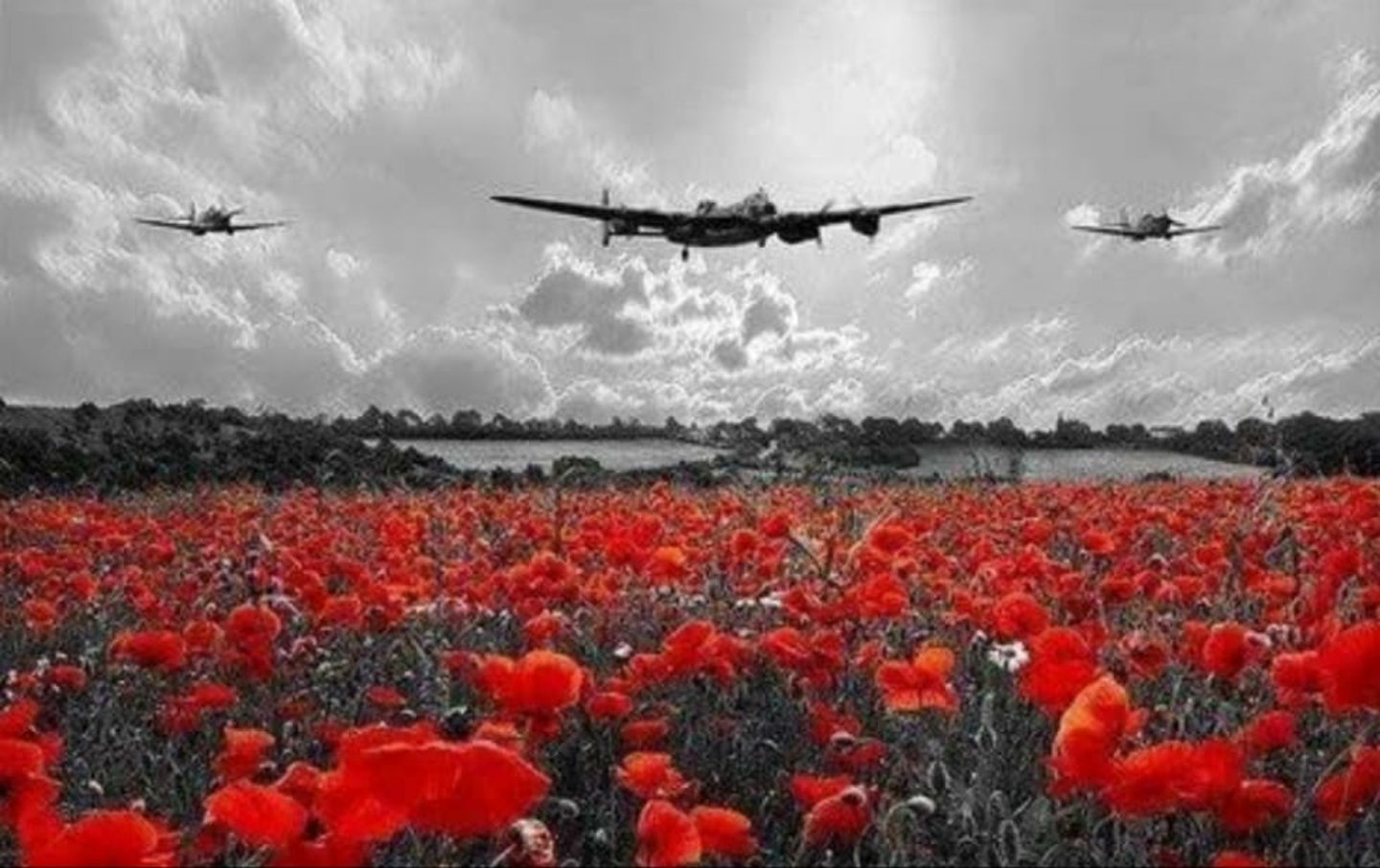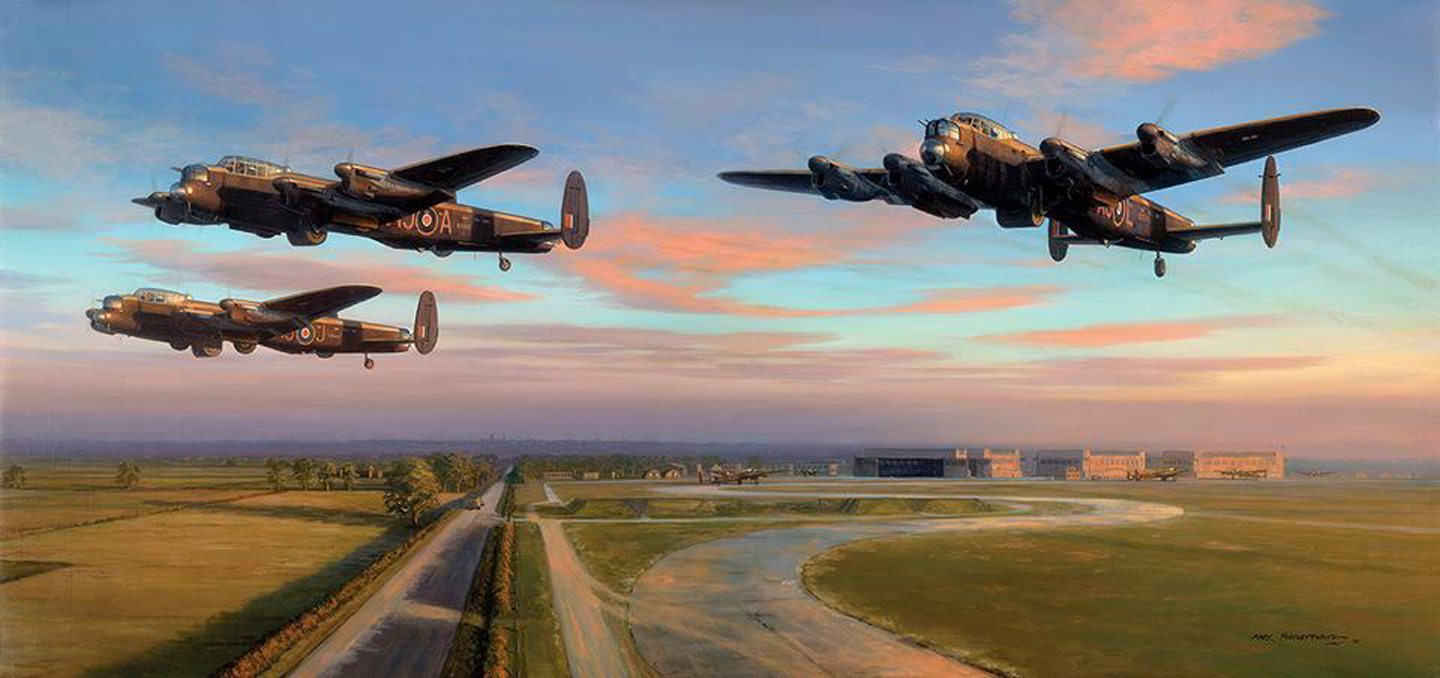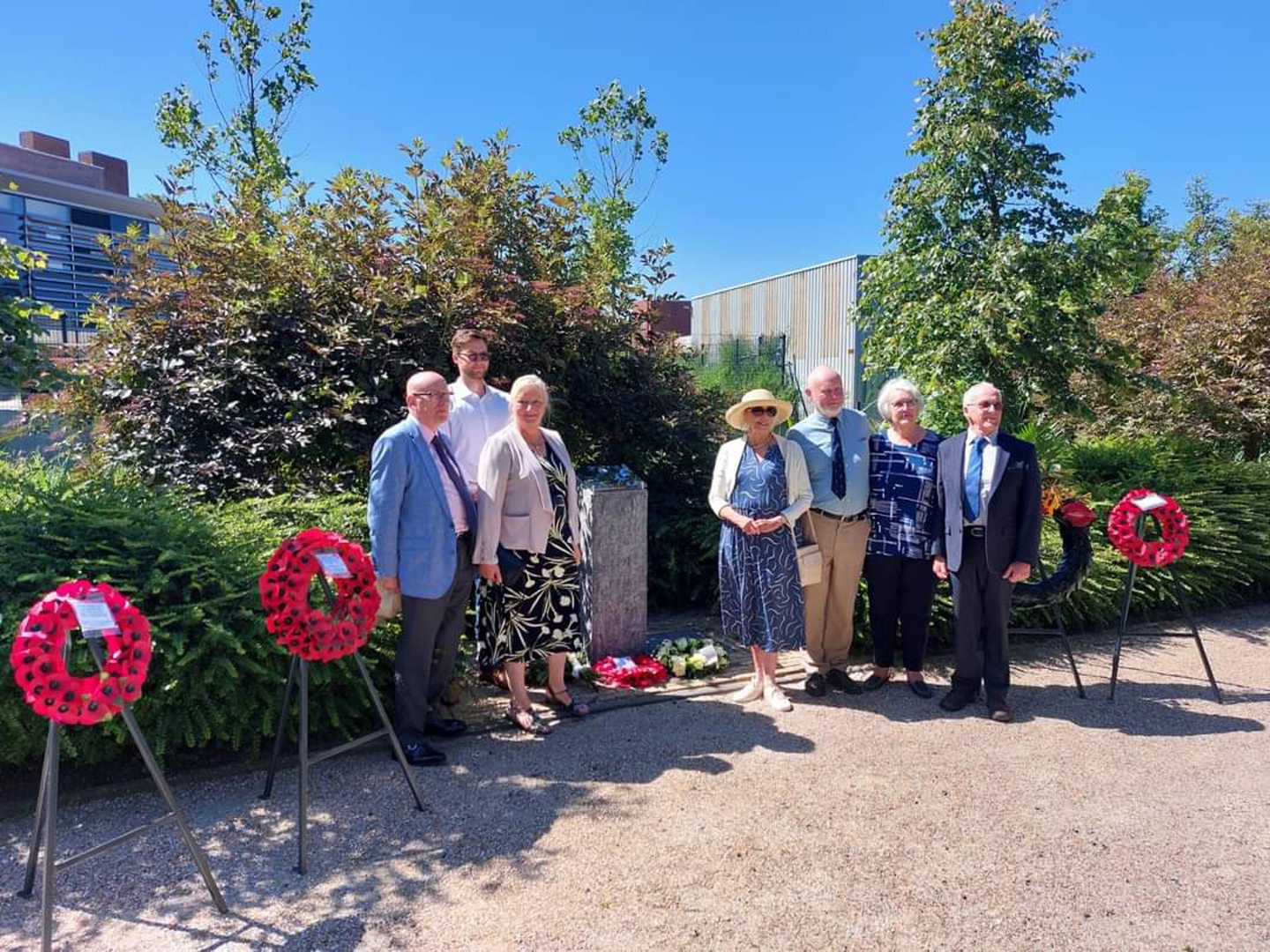Alastair Taylor waved happily to his mother, Sarah, at Kirkhill Farm in Alves, as he was flying over the property on a return trip to Lincoln from RAF Kinloss.
Here was a keen-as-mustard engineer, a 20-year-old Moray man who had reached for the sky in heroic fashion and was determined to help the Allies in their battle with the Luftwaffe throughout the Second World War.
But destiny had other plans in store.
Just a few days later, on May 16 1943, the flight engineer was among those who embarked on Operation Chastise; the official name for the Dambusters raids which have become an iconic part of the conflict and whose ingenious use of bouncing bombs, devised by Barnes Wallis, was subsequently immortalised in a feature film which brought the story to the silver screen.
Sadly, though, Sgt Taylor was one of the seven crew members aboard the Lancaster AJ-K, which never came back from the mission.
And only now, nearly 80 years later, have his family been able to attend a poignant commemorative service for their lost boy in the Netherlands.
Nobody was under any illusions about the hazards faced by 617 Squadron when they took off from RAF Scampton in Lincolnshire in a bid to destroy the strategically-important Mohne, Edersee and Sorpe dams in the Ruhr Valley.
Yet, by the end of the mission, 53 of the 133 men who participated in the audacious attack were killed, a casualty rate of almost 40%, which prompted Barnes Wallis to question whether such losses could ever be justified.
Sgt Taylor and his comrades – Vernon Byers, James Warner, John Wilkinson, Neville Whitaker, Charles Jarvie and James McDowell – were among the first to succumb to the ferocious resistance they encountered from the enemy.
Flying at very low level, their plane was hit by German anti-aircraft fire near Texel, in the northern Netherlands, and it crashed into the Waddenzee about 18 miles west of Harlingen. All seven crew members lost their lives.
The body of rear gunner McDowell, of the Royal Canadian Air Force, was recovered on June 22, south of Terschelling and buried the next day in Harlingen cemetery. But the other six crew members, none older than 25, were listed as missing and commemorated on the Runnymede Memorial.
In the bigger picture, the mission was successful in causing widespread devastation across the heartland of Germany’s industrial basin, even though some of the air force leaders, including Sir Arthur “Bomber” Harris, regarded the raid as a failure and described it as a “waste of resources”.
Dambusters caused serious damage
Nonetheless, both the Mohne and Edersee dams were breached, causing catastrophic flooding of the Ruhr valley and villages in the Eder valley.
Two hydroelectric power stations were destroyed and several more damaged with many factories and mines flattened by the sheer force of the water.
An estimated 1,600 civilians – 600 Germans and 1,000 forced labourers, the majority from the Soviet Union – died in the torrential deluge. And, despite rapid repairs by the Germans, production in the area did not return to normal until September: a delay which sparked serious supply problems.
In his book Inside The Third Reich, Albert Speer acknowledged the audacity of the raid: “That night, employing just a few aircraft, the British came close to a success which would have been greater than anything they had achieved hitherto with a commitment of thousands of bombers.”
In the aftermath, Bomber Command wanted a damage assessment as soon as possible and a photo-reconnaissance Spitfire, piloted by Jerry Fray, arrived over the Ruhr some hours after first light on May 18 and recorded the scale of the destruction which had been wreaked in such a short time.
He later recalled: “When I was about 150 miles from the Mohne Dam, I could see the industrial haze over the Ruhr area and what appeared to be a cloud to the east of the region. But, on flying closer, I saw that what had seemed to be cloud was the sun shining on the floodwaters.
“I looked down into the deep valley which had been so peaceful three days before, but which now was a wide torrent. The whole valley of the river was inundated with only patches of high ground and the tops of trees and church steeples showing above the flood. I was overcome by the immensity of it.”
None of this would have offered much consolation to Alastair’s parents, Sarah and Stephen, back at their farmstead in Moray. Eventually, they received a brief communication – a missive dreaded by all families – which informed them of the grim news that their son was missing in action.
Yet, while there was a grievous casualty list in the Dambusters raid, those who perished have never been forgotten, notably in the Netherlands where the population remains as committed now as they have always been to honouring those who died to ensure that democracy could survive the evil of Nazism.
That explains why members of the Taylor family from Stirling, Larbert, Forres and Garmouth in Moray and as far away as Christchurch in New Zealand recently attended the unveiling of a memorial to the lost seven crew.
Wendy Moncrieff told the Press and Journal why it had been an emotional visit to pay her respects to her uncle Alastair whose bravery and sacrifice has never been forgotten by those who have followed in his family footsteps.
She said: “I can’t speak highly enough of how we were treated by our hosts. The placing of the memorial had been organised and arranged by The 617 Squadron Netherlands Aircrew Memorial Foundation.
“At 11am, a service was held in the beautiful Harlingen cemetery which included speeches from the Mayor of Harlingen, a representative of the British Embassy in The Hague, and the family of Sgt Taylor.
“I was involved in the unveiling with my nephew – who is also Alastair Taylor. Then wreaths were laid by the Town of Harlingen, British Embassy, Royal Air Force Association, The Royal British Legion and 617 Squadron Association.
“The names of the seven airmen were read out and then a trumpeter played The Last Post and a two-minute silence was observed. A piper, in full dress, opened and closed the service during which there was a flypast by two Dutch Air Force F35 aircraft from 322 Squadron.”
The occasion was marked on Dutch TV. And, not for the first time, many local residents expressed their gratitude for the gallantry of the fallen.
She added: “The six missing airmen were the only ones of the 53 men lost on the raids not to have their own graves or memorial to commemorate them.
“But that has now been rectified. Funding for the memorial came from The 617 Squadron Netherlands Aircrew Memorial Foundation, from a GoFundMe page, the local Rotary Club in Harlingen and from several private sources.
“This is a wonderful tribute to those brave young men. We are very proud of it and we are happy to have been there for what was a great, if poignant, event.
“They will always be remembered for their sacrifice all those years ago.”
More like this:
The mystery of the Montrose pilot who vanished during the Battle of Britain
The Aberdeen Blitz of 1943 left the city in ruins and death all around




